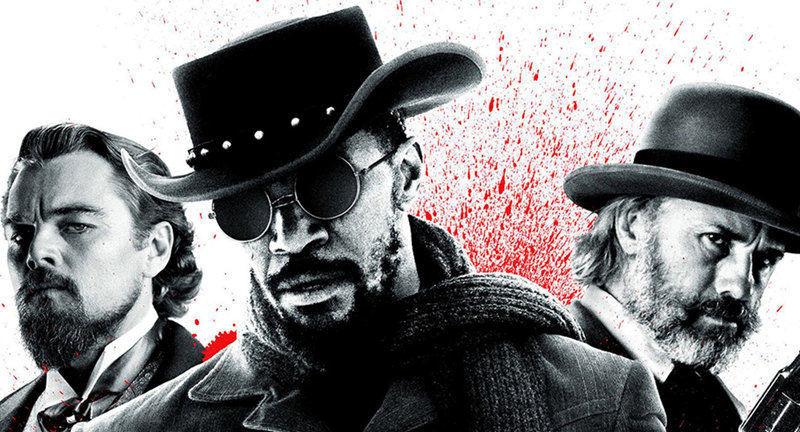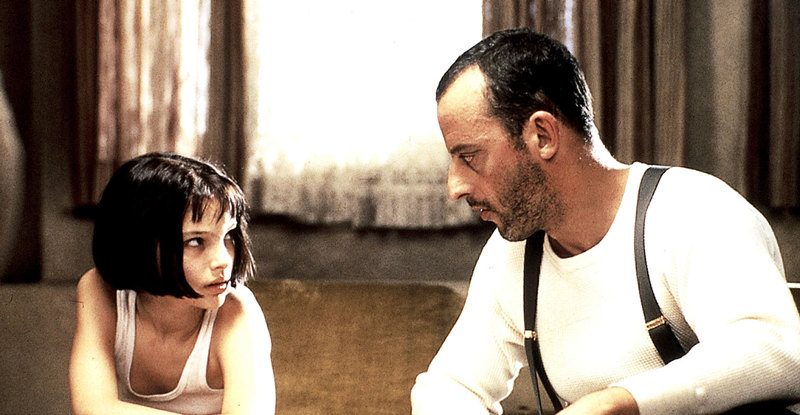Director Martin Scorsese might better have titled his 2008 concert documentary of The Rolling Stones “The Band That Wouldn’t Go Away.” Not that anybody would want them to go away, but the Stones have been around for well over forty-five years now, longer than most folks have been alive. They must seem like Jurassic dinosaurs to today’s young people, yet their music displays as much or more energy than that of groups a third their age.
Scorsese is no stranger to rock-documentary tributes, his having made the brilliant “Last Waltz” in 1978, which chronicled the farewell appearance of The Band. Now, the director makes an equally accomplished movie with the group that has been around for more years than practically any other music ensemble. I think the Mills Brothers may have them beat by a few years, but in time the Stones will probably overtake their record, too.
Even though I have never been a Stones fan, I have to admit that the combination of the group’s showmanship, Scorsese’s filming, and this new high-definition Blu-ray transfer make “Shine a Light” an exhilarating and wholly engrossing event. After about ten or fifteen minutes of mundane prefatory material–the band setting up, the director making final arrangements–the concert presentation begins with no less than Bill Clinton introducing the show. Think about it: The Stones started singing together almost half a dozen years before Scorsese made his first full-length movie and while Clinton was still in high school.
Then, when the preliminaries are over and the Stones launch into their first number, “Jumpin’ Jack Flash,” the effect is genuinely electrifying. The energy is palpable, and you feel as though you’re there, on the spot, front-row center. It’s the difference between watching a typical MTV music video and “Raging Bull.”
OK, you’ve got to realize that time has taken a certain toll on the group, but not on their music making. The pressures of age and high living show up in their faces, especially as Scorsese peppers the live, 2006 concert presentation with archival footage of interviews from the early and mid 1960s. Yes, Mick Jagger’s face used to look young. But you know what? When you see him still romping, frolicking, and dancing around the stage with the body of teenager, you forget his age. It’s all about the music.
The music is mostly rock, with a smattering of country and blues. Among the musicians who perform with the Stones in this concert are Jack White III, Christina Aguilera, and longtime bluesman Buddy Guy, who is the only person in the auditorium who predates the Stones as a star entertainer. Yet it’s the Stones who rivet our attention from start to finish. Vocalist Jagger remains the quintessential rock star as he prances to and fro to the adoration of a packed house of mostly young people. Guitarist Keith Richards is forever the pirate who inspired Johnny Depp’s Captain Jack. Drummer Charlie Watts continues to look like the group’s accountant. And, no offense, newcomer Ronnie Wood (who joined the group in 1974) is looking more and more to me like Marty Feldman’s Igor from “Young Frankenstein.”
Yes, Scorsese keeps the Stones first and foremost in this movie, thanks to the masterly work of him and his staff in capturing the excitement and, more important, the spirit of the event. Scorsese shows his affection for a favorite, iconic rock band, shooting the musical numbers with a maximum of impact, creativity, and imagination, while never making it flashy. We’re always aware that it’s the Stones and their music that count, not the filmmaker’s art, no matter how good it is.
In other words, in “Shine a Light” we get an authoritative filmmaker who never draws attention to himself but shows us the subject matter in as brilliant a manner as possible.
Although it might help to like the Stones in the first place to appreciate the movie fully, I’m betting that even those folks who hate the group will get caught up in the electricity of the event. It’s maybe the closest thing on film to being at a live concert that I’ve ever experienced, even though the visuals are a far different matter from being there in person. “Shine a Light” is quite extraordinary and worth repeat visits.
Video:
The upscaled standard-definition disc’s anamorphic picture was already plenty good, but this MPEG-4/AVC, 1080p, BD50 Blu-ray goes it one further. The opening black-and-white shots are sharp and well contrasted, with appropriately noticeable grain; then, when the color kicks in, it looks comparatively spectacular.
The movie contains a variety of footage in dimensions that range from 1.33:1 vintage full-screen to 1.85:1 widescreen. Most of it is in the later ratio, and in high definition it is excellent for its kind–clear, clean, and fluid. In comparing this BD disc to its standard-def counterpart, I noticed that facial close-ups didn’t reveal a lot of difference, but medium and longer shots displayed greater clarity and sharpness. Individual members of the audience were more distinct, and the lettering on the front of the drum set was by far more readable. For this work, thank Scorsese’s expert team of cinematographers: Robert Richardson (“The Aviator”), Robert Elswit (“There Will Be Blood”), Andrew Lesnie (“The Fellowship of the Rings”), John Toll (“Legends of the Fall”), Emmanuel Lubezki (“Children of Men”), Ellen Kuras (“Summer of Sam”), Stuart Dryburgh (“The Piano”), and Declan Quinn (“Leaving Las Vegas”).
In the Blu-ray reproduction I observed zero halos; a minimum of natural grain to provide realistic texture; reasonably deep black levels; good shadow detailing; and a fine sense of three dimensionality and stage depth. Given the circumstances of the live filming, the large auditorium, the relatively harsh lighting, and the ceaseless improvisations of the performers, I’d say the video quality is about as good as it could be.
Audio:
Try as I might, I could tell no differences between the disc’s two lossless audio tracks, Dolby TrueHD 5.1 and DTS-HD Master Audio 5.1, either by ear or using a sound meter. I’m sure devotees of one format or the other will hear night-and-day distinctions, so I leave that matter to more golden ears than mine to argue. There is a also a 2.0 track in uncompressed PCM, to which I listened for only a moment. For two-channel systems, it should more than suffice.
For those listeners with 5.1 systems or above, both multichannel tracks are wonderfully atmospheric and display a load of surround activity, with excellent midrange clarity. Moreover, the extra smoothness of the lossless codecs mitigate some of the forward brightness I noticed on the SD edition’s regular Dolby Digital. The sweep, scope, and breadth of the sound are often breathtaking. The instruments and vocals are in the front of us, the musical bloom carries over into the surrounding area, and the audience noises and applause show up in the rear. It puts the listener into the center of the concert performance, a true you-are-there experience.
Extras:
The extras, also in MPEG-4/AVC, start with four bonus performances by the Stones, not shown in the movie’s theater release. These are “Undercover of Night,” “Paint It Black,” “Little T & A,” and “I’m Free.” Following these numbers is a fifteen-minute, behind-the-scenes featurette. The bonus songs and the featurette feel like deleted items that Scorsese could have left in the film. The extras conclude with twenty-one scene selections but no chapter insert, and I really missed a printed song list; English as the only spoken language; English, French, and Spanish subtitles, with English captions for the hearing impaired; bookmarks; and pop-up menus.
Parting Thoughts:
There are rock legends who predate the Stones and are still performing: Chuck Berry, Little Richard, Jerry Lee Lewis, and the aforementioned Buddy Guy, among others, come to mind. But as a group that has remained in the upper stratosphere of superstardom, the Stones have no peers. To think that some forty-six years after they started together that the act would continue to be at the height of their powers and stardom is extraordinary. And that Martin Scorsese should disappear into his concert-film documentary as effortlessly as he does is equally remarkable.
The only drawbacks I found to the movie were that it is exhausting, and that you might encounter the sort of problems I did when the Wife-O-Meter came from upstairs to tell me to turn it down.
Play it loud and enjoy.


